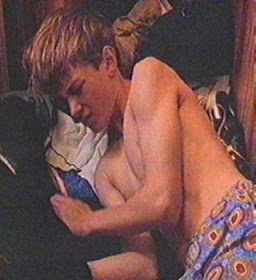During my freshman year at Augustana, shortly after the summer of Grease, I was looking for anything written about gay people. Readmore Bookworld had nothing, and the "h" section of the card catalog of the Augustana College Library listed only Nothing Like the Sun, by Anthony Burgess, which had no gay characters in it. Carefully-worded inquiries to my sophisticated, artistic friend Aaron, who took me to The Rocky Horror Picture Show (he was gay, but didn't know it yet) revealed that there had been only four gay writers in the history of the world: Shakespeare, Oscar Wilde, Tennessee Williams -- and Samuel R. Delany.
 Today Delany is a veritable queer theorist, churning out solemn, artsy tomes on race, sexuality, identity, and male prostitution that delight the deconstructionists. But in 1979 you had to wade through dense, turgid prose in Triton, Dhalgren, Babel-17, and The Einstein Intersection to find glimmers of characters who were multisexual, multigendered, and incorrigibly decadent. Where were the gay people?
Today Delany is a veritable queer theorist, churning out solemn, artsy tomes on race, sexuality, identity, and male prostitution that delight the deconstructionists. But in 1979 you had to wade through dense, turgid prose in Triton, Dhalgren, Babel-17, and The Einstein Intersection to find glimmers of characters who were multisexual, multigendered, and incorrigibly decadent. Where were the gay people?Apparently Dhalgren has been made into an experimental play. I have no idea what it's about.
But it turned out to be a gay love story.
Gorjik, a “great muscled, affable, quiet giant of a youth,” rises from slavery to a position of power, and then goes out to acquire some slaves of his own. He buys Small Sarg, a barbarian prince (which means he’s dirty and smells bad), takes him home, and indicates that they are to have sex. Small Sarg responds “that’s silly. . .that is what boys do,” but he agrees to “do it” anyway, as long as he can remove his slave collar first. Gorgik happily obliges, since he is into S&M, and wants to wear the slave collar himself. After their first encounter, they both pretend to be asleep while thinking of coy ways to cuddle: Delany is good at describing sex, but affection between men makes him queasy.
Later in the book, they become professional abolitionists, invading crumbling, decadent castles to liberate slaves. Sometimes Gorgik is captured and tortured, but he rather enjoys it. They take turns wearing the slave collar and refer to each other intermittently as “master.” When questioned about this odd arrangement, Gorgik responds: “We are lovers. . .and for one of us the symbolic distinction between slave and master is necessary for desire’s consummation.”
One wishes that, at least by the end of the series, they would settle down to a nice egalitarian partnership, but after a lifetime of subtle hints and heterosexist "fade out kisses," Gorgik and Small Sarg came to me as a Copernican revolution.
Here, for the first time ever on a printed page, I read of men who loved each other, and who were lovers. The image of Small Sarg beneath Gorgik’s massive arm, staving off sleep, lying perfectly still so Gorgik wouldn’t shift position, remained with me forever.
See also: Michael Moorcock.


















